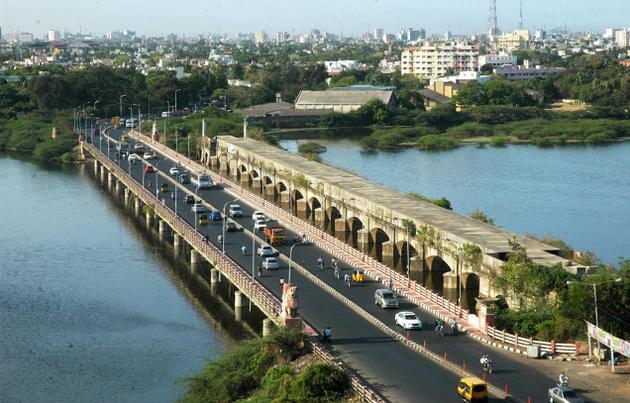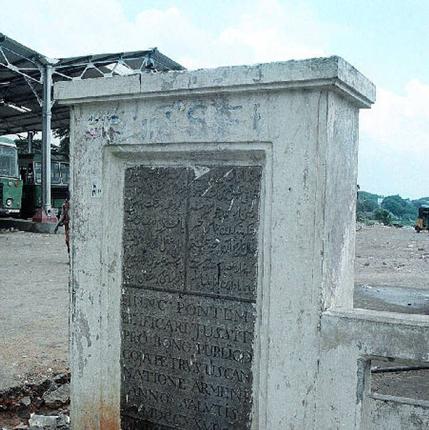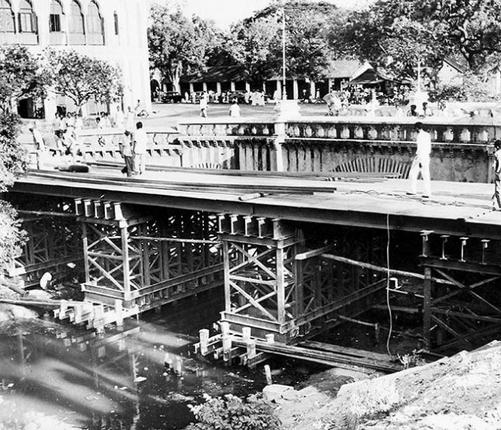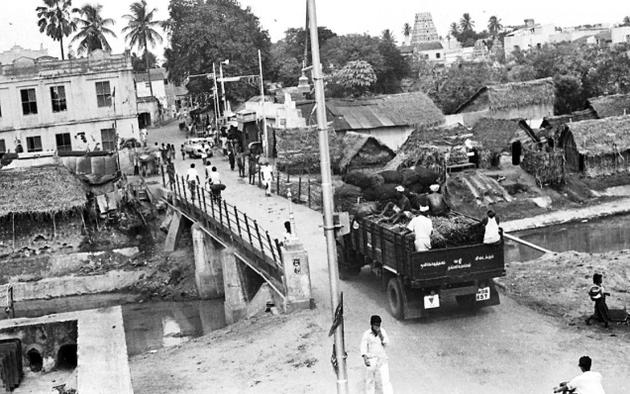
In this concluding part on old bridges, Anusha Parthasarathy explores some lesser-known ones, besides the big names that define Chennai
As the 1700s dawned, more villages came under Madras. Governor Thomas Pitt, who took over in 1698, is credited with adding five more towns to the city — Trivatore, Nungumbaukum, Vasalavada, Catawauk and Satangadu. Soon, more bridges would be needed.
An Island bridge was projected by Yale in 1690 but wasn’t built until 1715, connecting the Fort to the Island, but this was damaged over and over again and was later removed because there was a diversion of the stream on which it was built.
Following this was the Triplicane Bridge, also known as St. George’s Bridge, Lord Willingdon Bridge, now the Periyar Bridge. According to Vestiges of Old Madras, it connected the Island to Triplicane, and the Fort to San Thome and the Mount. This was sometime between 1715 and 1718.
Periyar Bridge, a multi-arched bridge rebuilt in 1805, is of a different alignment.
THE MARMALONG BRIDGE
In 1726, one of the most popular bridges of Madras was being built — Marmalong Bridge, the first across the Adyar River. Built by the Armenian Coderjee Petrus Uscan (who came to Madras in 1724) with his own money, the bridge was named Marmalong after Mambalam, a village on the Adyar River, west of San Thome. The plaque on one of the pillars of the old bridge still exists, even if in another place altogether. There is no trace of Uscan’s arched bridge now and a concrete structure, Maraimalai Adigalar Bridge, has taken its place.

In 1755 came the Wallajah Bridge, connecting the Wallajah Gate of the Fort to the Island. The bridge ends and in the middle of this stretch is the Monroe statue, says S. Muthiah’s Madras Rediscovered. According to Vestiges of Old Madras, a stone inscription on the west end of the bridge says, ‘Wallajah Bridge, erected by Order of Government in 1755…’ This was widened and the new bridge, with concrete on one side, is now called the Quaid-e-Millath Bridge.
Except for those mentioned above, it has been difficult to pinpoint dates for the other bridges that were built in the 1700s and 1800s. While there is some information about a few of them, the stories of most arched bridges are foggy, to say the least.
Archival information
Hemachandra Rao has diligently gathered details from the State archives and other sources. “There is a rather old bridge down Chintadripet which leads to Ripon Building, called Law’s Bridge. A name plaque still exists,” he says. “If you look down at the river, you can even see an abandoned boat jetty nearby.” The bridge, however, is now full of garbage and just a walk down is an assault on one’s senses.
The famous Napier Bridge, which connects the entire stretch of the Marina with the Fort, was built in 1869 by Francis Napier, then Governor. This bridge was widened in 1999. “On this bridge, the arches are on the top, a rather different one,” says Rao.

Other bridges are the Chintadripet Bridge, which connects Chintadripet with Egmore. Turn right and you will land on St. Andrew’s Bridge, which is now popularly called Gandhi-Irwin Bridge. “When these bridges were constructed is not clear and there is very less information available,” says Rao, who also pinpoints that a left from Chintadripet bridge will take one down Lang’s Garden Road and to Harris Bridge (now Adhithanar Bridge), which, according to the plaque on one of its stone walls, was built in 1855.
Binny Bridge, adjacent to Connemara Hotel, is named after John Binny, whose residence became the Imperial Hotel, which is now the Vivanta by Taj Connemara. This also seems to be called Commander-in-Chief’s Bridge, which would lead us to think it was built in 1825 (according to H.D. Love’s book). “If you go down that road, you can see the arches of Anderson Bridge as you approach the Pantheon Road signal,” says Rao. This bridge is named after Dr. James Anderson, who had a botanic garden in the area once. The bridge was built in 1829.
There seems to have been a Monroe’s Bridge but it is no longer in use. An Elphinstone Bridge (1840) on River Adyar, seems to be the one in disuse on the side of the current Adyar Bridge, says Rao. Basin Bridge, named after a basin nearby to purify water, is one of the bridges on the Buckingham Canal. There seems to have been a Granduff Bridge nearby (named after an erstwhile Governor) but one can’t pinpoint its location. Chepauk Bridge, Royapuram Bridge over a railway line (the arches are clearer since there is no water beneath) and the Ice House Bridge are the others.
More links to the past
On the other side of Mount Road and Triplicane are a few more bridges that aren’t really talked about. The Luz Bridge connects Mylapore and Luz, Mundakanniamman Koil Bridge connects Luz to Kutchery Road and the Cancer Institute Bridge. Pycrofts Bridge, one on Edward Elliot’s Road (now R.K. Salai) near the DGP’s office, is lesser-known.

Even as the arches grow weary and their colours turn dull, these bridges witnessed the growth of this city, from its humble beginnings to the metropolis it has now become.
source: http://www.thehindu.com / The Hindu / Home> Features> MetroPlus / by Anusha Parthasarthy / April 16th, 2013